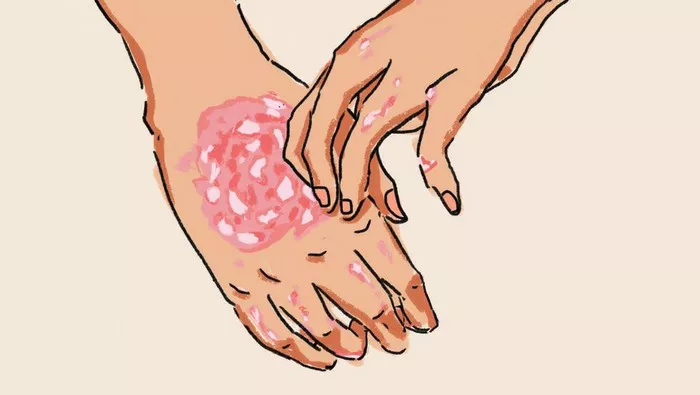Psoriatic arthritis (PsA) is a chronic inflammatory condition that affects individuals with psoriasis, an autoimmune skin disorder. It is characterized by joint pain, swelling, and stiffness, and can lead to significant disability if left untreated. While the primary focus of PsA is often on the joints, the condition can also impact other structures in the body, including tendons. Tendonitis, or inflammation of the tendons, is a common concern for individuals with PsA, and understanding the relationship between these conditions is crucial for effective management and treatment.
The Connection: How Psoriatic Arthritis Impacts Tendons
Tendons are thick cords of tissue that connect muscles to bones, allowing for movement and stability in the joints. In individuals with PsA, the immune system mistakenly attacks healthy tissues, including those in and around the joints. This immune response can extend to the tendons, leading to inflammation and tendonitis.
The exact mechanisms by which PsA causes tendonitis are not fully understood, but research suggests that several factors may contribute:
1. Inflammatory Response: PsA is characterized by chronic inflammation, which can affect the synovium (the lining of the joints) and nearby structures, including tendons. Inflammation in the tendons can result in swelling, pain, and limited mobility.
2. Enthesitis: Enthesitis is a hallmark feature of PsA, involving inflammation at the site where tendons and ligaments attach to bones (entheses). This can lead to tendon inflammation and eventual tendonitis.
3. Mechanical Stress: The altered biomechanics of joints affected by PsA can subject tendons to abnormal stresses and strains, increasing the risk of tendon damage and inflammation.
Clinical Presentation of Tendonitis in Psoriatic Arthritis
Tendonitis associated with PsA can manifest in various ways, depending on the specific tendons affected and the severity of inflammation. Common symptoms of tendonitis in PsA include:
- Pain: Tendon pain is often localized to the affected area and may worsen with movement or pressure.
- Swelling: Inflamed tendons can become swollen and tender to the touch.
- Stiffness: Tendonitis can lead to decreased flexibility and range of motion in the affected joint.
- Weakness: Severe tendonitis may result in weakness of the associated muscles.
Tendon involvement in PsA can occur in different locations, including the Achilles tendon (Achilles tendonitis), tendons of the hands and wrists, and tendons around the feet and ankles. In some cases, tendon inflammation may be asymptomatic initially but can progress over time if left untreated.
Diagnosis and Management
Diagnosing tendonitis in the context of PsA requires a comprehensive evaluation by a rheumatologist or orthopedic specialist. Diagnosis typically involves a combination of:
1. Medical History: Understanding the patient’s history of psoriasis, joint symptoms, and prior episodes of tendon pain.
2. Physical Examination: Assessing for signs of inflammation, tenderness, and range of motion limitations in affected joints.
3. Imaging Studies: X-rays, ultrasound, or MRI scans may be utilized to visualize joint and tendon abnormalities.
Treatment of tendonitis in PsA aims to reduce inflammation, relieve symptoms, and preserve joint function. Common approaches include:
1. Medications: Nonsteroidal anti-inflammatory drugs (NSAIDs), corticosteroids (injected locally for severe cases), and disease-modifying antirheumatic drugs (DMARDs) are prescribed to reduce inflammation and suppress the immune response.
2. Physical Therapy: Targeted exercises and stretches can help improve joint flexibility, strengthen muscles, and alleviate stress on tendons.
3. Rest and Protection: Avoiding activities that exacerbate symptoms and using supportive devices (e.g., splints, orthotics) can promote healing and prevent further damage.
4. Lifestyle Modifications: Maintaining a healthy weight, adopting joint-friendly exercise routines (e.g., swimming, yoga), and quitting smoking can positively impact PsA and associated tendonitis.
In cases of severe tendon involvement or refractory symptoms, surgical intervention such as tendon repair or release may be necessary.
Prognosis and Outlook
The prognosis for tendonitis in PsA varies depending on the extent of joint involvement, severity of inflammation, and response to treatment. Early diagnosis and proactive management are key to preventing long-term joint damage and disability. With appropriate medical care, including a combination of medication, physical therapy, and lifestyle modifications, many individuals with PsA-related tendonitis can achieve symptom relief and maintain a good quality of life.
Conclusion
Psoriatic arthritis is a complex autoimmune condition that can affect multiple structures within and around the joints, including tendons. Tendonitis is a common manifestation of PsA and can significantly impact joint function and mobility. Understanding the relationship between PsA and tendonitis is essential for accurate diagnosis and effective management. With a multidisciplinary approach involving rheumatologists, orthopedic specialists, and physical therapists, individuals with PsA-related tendonitis can benefit from tailored treatment strategies aimed at reducing inflammation, preserving joint integrity, and optimizing overall health and well-being. Early intervention and ongoing monitoring are crucial to minimizing the impact of tendonitis and improving outcomes for patients with PsA.
Related Topics:
























